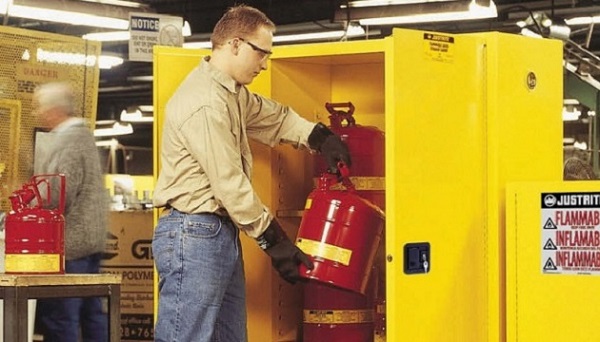Different Types and Practices of Chemical Storage Cabinets
What makes construction sites, factories, labs and warehouses dangerous places for people (workers mainly) is the easy access to fuels and other hazardous chemicals; accessible to those who are and those who aren’t competent enough for dealing with heavy substances. This is why having chemical storage cabinets is more than a convenient thing; it’s a must so that only those who have the knowledge and skills to deal with hazardous liquids can actually do it. Plus, it doesn’t hurt for everything of great hazard to be safely stored out of people’s reach.

With the new legal protection of workers on sites and factories, safety matters come first in every building and manufacturing site. When it comes to working with dangerous liquids, nothing is better than having chemical storage cabinets ready to store various fuels, chemicals and other liquids that are potentially dangerous for people and the environment. After all, having liquids that are combustible and can burn down the entire site from a single flame, is something managers and business owners need to seriously consider. Here are a few practices on how to deal with situations like these.
Train the employees to deal with chemical storage containers
It’s always good for your employees to know how to deal with hazardous materials. This can minimize the risks of injuries caused by toxic substances. They should also be trained to know which materials to use when handling various substances; to distinguish them well and to know which substance can be stored in a corrosive chemical storage cabinets. For example, such cabinets shouldn’t be used for chemicals where chemical purity is a priority.
Choosing the right chemical safety cabinets
The most important thing about knowing materials and substances is to be able to choose the right chemical storage cabinets. Substances can react with various materials and cause changes in content, texture, colour and overall properties. So, according to what you need the substance to look like after being stored in a container, choose chemical storage cabinets made of:
- Galvanized steel – if you chemical purity is not a concern since some of the chemicals (most of them actually) will react with paint;
- Polyethylene – if you store acids, caustics and other corrosive substances;
- Stainless steel – use it when you need chemical purity.
Organize your chemical storage cabinets
Organization is the key. Knowing which substance is in which cabinet, will ease your work substantially. It will make everything a lot faster and a lot safer to deal with. Plus, workers will be more organized and there will be no fuss when something needs to be done out of the blue. One of the best ways to organize fluids is colour organization; mark cabinets with a certain colour. Here are few examples.
- Gasoline is stored in containers with red mark;
- Diesel goes in the one with yellow mark;
- Kerosene goes in blue containers;
- Oil combustibles are stored in green cabinets.
This is a general colour scheme used for flammable liquids, but it doesn’t mean you can’t use it for whatever substances you’re working with. Or, make a new one, completely designed for your principle of work. The important thing is to have all your hazardous fluids well organized for easy access and safe handling.












